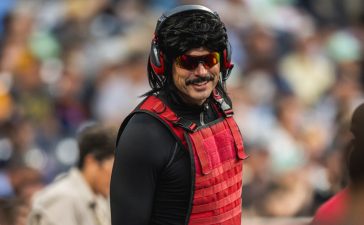For years now, civil engineers have understood that bridges have a problem: many of them are not designed to withstand a blow from the kinds of cargo ships that routinely pass through their waters. Those concerns came to a head on Tuesday with the devastating collapse of the Francis Scott Key Bridge in Baltimore, Maryland. It’s the kind of failure engineers have been trying to prevent for decades — and even now, they’re not sure if the available solutions are enough.
“We don’t design for the deadly force that is generated by such an impact — millions of pounds,” Atorod Azizinamini, a professor of civil and environmental engineering at Florida International University, tells The Verge. “The collapse has really nothing to do with the type of the bridge … the redundancy, or inspection.”
The Key Bridge was the second-longest continuous through truss bridge in the US, behind the Astoria-Megler Bridge connecting Oregon to Washington. But this week, the massive MV Dali cargo ship collided with the Key Bridge’s support column, causing a complete collapse that took place within seconds. Two construction workers were killed, while four others are presumed dead.
“The 3-span continuous nature means that when the main span’s pier was destroyed by the ship, the two directly affected spans lost one of their primary supports,” Douglas Schmucker, a professor of civil and environmental engineering at the University of Utah, tells The Verge. “When the middle span collapsed, it essentially pulled the third span with it because it was integrally designed to function together, not in isolation.”
This isn’t the first catastrophic bridge collapse of its kind. In 1980 — three years after the Key Bridge’s completion — a large portion of Florida’s Sunshine Skyway Bridge collapsed when a freighter crashed into one of its support beams, killing 35 people. The National Transportation Safety Board’s accident report identified the lack of a pier protection system that could have “absorbed some of the impact force or redirected the vessel” as a factor in the bridge’s failure. When rebuilding the Sunshine Skyway, engineers decided to install dolphins — concrete structures placed around the bridge’s piers — to absorb the impact of a collision, while also blocking the boat from hitting the bridge directly.
In response to the Sunshine Skyway tragedy, the American Association of State Highway and Transportation Officials (AASHTO) introduced new specifications for vessel collision design of highway bridges in 1991. The new standards say engineers should design navigable waterways “to prevent collapse of the superstructure by considering the size and type of the vessel available water depth, vessel speed, and structure response.”
However, Schmucker notes that these new rules typically take a few years before they’re adopted. “It could easily have been into the 2000s before you actually saw a bridge designed for it,” Schmucker says. “That’s because of that lengthy process we use for significant bridges over navigable waterways. They are expensive… and they can be a challenge to integrate with the environment.”
As bridge builders began adopting AASHTO’s vessel collision guidelines, we saw bridges like the Arthur Ravenel Jr. Bridge in South Carolina get built. It was completed in 2005 to replace an older bridge that was deemed structurally unsound and not tall enough for cargo ships to pass beneath. The Ravenel Bridge has one-acre rock islands surrounding each of its piers, so if a cargo ship loses control near the bridge, it would run aground before colliding with the pier.
Older bridges weren’t made to withstand collisions with cargo ships the size of Dali. Baltimore’s Key Bridge was finished in 1977, costing around $110 million to construct at the time. It stretched over the Patapsco River, adjacent to the busy Port of Baltimore, with around 11.3 million vehicles crossing it each year. In addition to helping divert traffic away from the Baltimore Harbor Tunnel, the Key Bridge also served as a critical route for vehicles carrying hazardous materials, which aren’t allowed inside nearby tunnels.
Officials tell The New York Times that the Key Bridge had concrete barriers installed in the river that were “intended to deflect or slow an out-of-control vessel.” However, they’re situated far from the bridge’s support beams, which means they didn’t offer any real protection in case of a direct impact.
Even if the Key Bridge had concrete islands surrounding its beams, they may not have been enough to lessen the effects of a collision from such a massive cargo ship like the MV Dali. “I’m not sure if any practical system (or even retrofit of the bridge) would have been efficient or even practical to prevent this disaster,” Khalid M. Mosalam, a structural engineer and professor of civil engineering at the University of California, Berkeley, tells The Baltimore Banner.
The nearly 1,000-foot-long MV Dali was only filled halfway to capacity when it struck the Key Bridge. It weighs about 95,000 tons, and that’s not including the 4,700 containers it had on board. The ship, which is chartered by the shipping company Maersk, is nearly the same length as the Eiffel Tower — and it’s far from the only one of that size.
Over the past two decades, the average size of cargo ships has grown enormously as shipping companies contend with global demand for goods. According to the Organisation for Economic Co-operation and Development, more than 90 percent of traded goods travel by water, with maritime trade volumes expected to triple by 2050. The reason shipping companies have started opting for larger “mega-ships” is simple: the larger the ship, the more goods it can carry in a single trip from retailers like Amazon, Target, and Walmart.
But larger ships also carry their own set of risks. In 2021, the 1,312-foot-long Ever Given ran aground in the Suez Canal and was trapped there for nearly one week. Ports have had to make adjustments to accommodate ships’ increased sizes. In 2017, the Panama Canal expansion project was completed to “meet the growing demand of maritime trade using larger vessels.” In 2019, the Bayonne Bridge connecting New York and New Jersey was raised 64 feet so ships could fit underneath.
During a press conference this week, US Secretary of Transportation Pete Buttigieg acknowledged that some modern bridges are “designed with different features to mitigate impacts and protect their piers.” But he also notes that there’s uncertainty surrounding their effectiveness. “Right now, I think there’s a lot of debate taking place among the engineering community about whether any of those features could have had any role in — in a situation like this.”
The collapse of the Key Bridge will likely lead some cities to reevaluate the safeguards their bridges have in place. Last year, New Castle, Delaware, kicked off a $93 million project to install dolphins surrounding the piers of the Delaware Memorial Bridge. While the city took the initiative to proactively reinforce the bridge, federal agencies could soon force other cities to do the same.
Azizinamini expects the National Transportation Safety Board to take a “very hard look” at the regulations in place to see if there are better ways to protect the nation’s bridges. “The first thing that we learn as an engineer is that public safety is the number one issue,” Azizinamini says.












